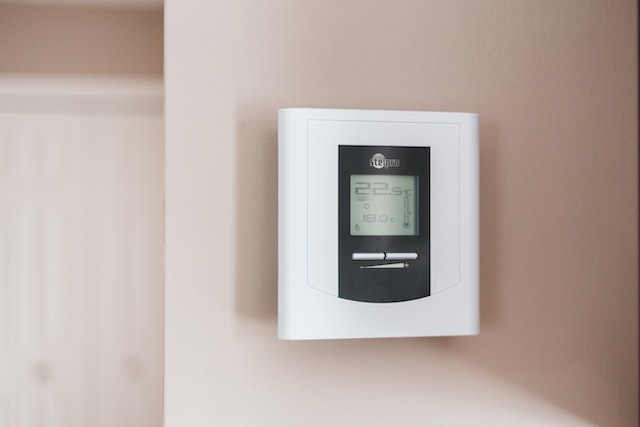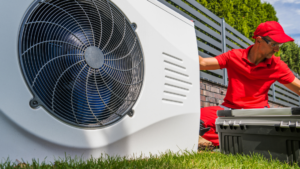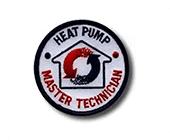As the cost of energy continues to rise, an increasing number of homeowners are searching for methods to improve the efficiency of their heating and cooling systems. The mini split heat pump has gained popularity during the last several years.
But, what is a mini-split heat pump? This article explains what is a heat pump mini split, how it operates, and why it may be a smart option for your house.
What is a Mini Split Heat Pump system?
The components of a mini split heat pump are an exterior compressor unit and one or more inside air handlers. Mini split heat pumps bring conditioned air directly to the area they are placed in, as opposed to conventional HVAC systems that utilize ducts to circulate air throughout the house. This makes them suitable for houses with no existing ductwork or for hard-to-reach portions of the home.
What is the operation of a mini split heat pump?
At its most fundamental level, a mini split heat pump transfers heat from one location to another. The technology takes heat from the inside air and transports it outdoors during the summer, leaving behind cold, comforting air. In the winter, the system absorbs heat from the exterior air and delivers it inside, therefore heating the interior area.
To comprehend this, it is important to be familiar with the fundamental operation of heat pumps. Conventional heating devices, such as furnaces, create heat by burning fuel. In contrast, heat pumps utilize electricity to transfer heat from one location to another. This makes them far more energy-efficient since they can transport more heat than they use in power.
The outside unit of a mini split heat pump system has a compressor and a heat exchanger. The compressor circulates refrigerant throughout the system, while the heat exchanger transfers heat between the refrigerant and the ambient air. The interior unit is equipped with a fan and a second heat exchanger. The fan pumps air across the heat exchanger, which transfers heat from the refrigerant to the interior air.
While the system is in cooling mode, the refrigerant absorbs heat from the inside air and releases it into the outside air. The cold refrigerant then returns to the interior unit, where it absorbs further heat, and the cycle repeats.
In heating mode, the operation is performed in reverse. The refrigerant takes heat from the outer air, transports it inside, and then releases it into the interior air. The heated refrigerant is then recirculated to the outside unit, where it absorbs further heat, and the cycle repeats.
Why Should You Choose a Mini Split Heat Pump?
Now that we have answered the question “What is a mini split heat pump?”. It is natural to wonder what the potential benefits of this system are. There are a number of reasons why a mini-split heat pump might be an excellent solution for your house. Here are a few:
Energy efficient
As previously stated, mini split heat pumps are far more energy efficient than conventional heating and cooling systems. This means they may reduce your carbon footprint and save you money on your energy expenses.
Better temperature control

Mini split heat pumps bring conditioned air directly to the room in which they are placed, allowing for more temperature and airflow control. This allows you to set various temperatures for different rooms or even switch off units in empty areas, conserving energy even more.
Simple installation
Mini split heat pumps are quite simple to install when compared to conventional HVAC systems. Due to the fact that they do not need ductwork, they may be put in houses without ducts or in regions where adding ducts would be difficult or costly.
Mini split heat pumps are available in a number of sizes and configurations, allowing them to be fitted to your home’s exact requirements. Also, they may be used for both heating and cooling, so you only need one system to provide year-round comfort in your house.
No noise
Mini split heat pumps are distinguished by their silent functioning. Due to the outside location of the compressor, there is no loud interior equipment to interrupt your everyday activities.
Better air quality
Conventional HVAC systems can move dust, allergens, and other pollutants throughout a home’s ductwork, therefore degrading the quality of the air. Mini split heat pumps supply conditioned air directly to the room in which they are placed, enhancing the quality of indoor air.
Durable
Mini split heat pumps are intended to survive for many years when properly maintained. This implies that you won’t have to replace your heating and cooling system for a very long time.
Mini split heat pumps are an excellent option for homeowners who want to increase the efficiency and comfort of their homes. They provide several advantages over conventional HVAC systems, including energy-efficient operation, simple installation, and adaptability.
Mini Split Heat Pump Variants
There are several varieties of mini-split heat pumps available, each with its own pros and cons. Below are some of the most prevalent varieties:
Single zone
Mini split heat pumps with a single zone comprising an outside unit and an inside unit. They are perfect for flats and single rooms.
Multi-zone
Mini split heat pumps with multiple zones consist of one outside unit and multiple inside units. They are suited for larger areas or houses with several heating and cooling-required rooms.
Ceiling cassette
Ceiling cassette mini split heat pumps have air vents that are flush with the ceiling and are positioned in the ceiling. They are perfect for places with limited wall space or for homeowners who choose a more discrete method of heating and cooling.
Wall-Mounted
Wall-mounted mini split heat pumps are the most frequent form of mini split heat pump and are mounted on the wall. They are simple to install and adaptable to a variety of environments.
Floor-Mounted
Floor-mounted mini split heat pumps are perfect for spaces with limited wall or ceiling space, since they are put on the floor. They are also an excellent option for households that seek a simple solution for heating and cooling that is easy to maintain.
Cost of Mini Split Heat Pump
The price of a mini-split heat pump system may vary significantly based on a variety of variables, such as the system’s size, the number of interior units, and the degree of installation complexity. A single-zone system costs between $1,500 and $4,000 on average, whereas a multi-zone system costs between $3,000 and $8,000. Nevertheless, these expenditures may be offset over time by energy savings, and many homeowners feel the initial investment to be well worth it.
There are recurring maintenance fees to consider in addition to the original investment. Mini split heat pumps need regular maintenance, such as filter cleaning and refrigerant level checks. Yet, these expenditures are often cheaper than regular HVAC system maintenance prices.
Conclusion
A mini split heat pump is a kind of heating and cooling system that may give homeowners efficient and adaptable heating and cooling options. Mini split heat pumps provide energy-efficient operation and may save homeowners money on their energy costs by transferring heat from one location to another.
Mini split heat pumps may be adapted to your home’s unique requirements, since they are available in a range of kinds and sizes. While there are initial expenses to consider, many homeowners feel that the long-term advantages of a mini split heat pump system justify the initial expenditure.
If you’re looking to install a new HVAC system, you can call us at (602) 266-5247 or schedule the service here.















